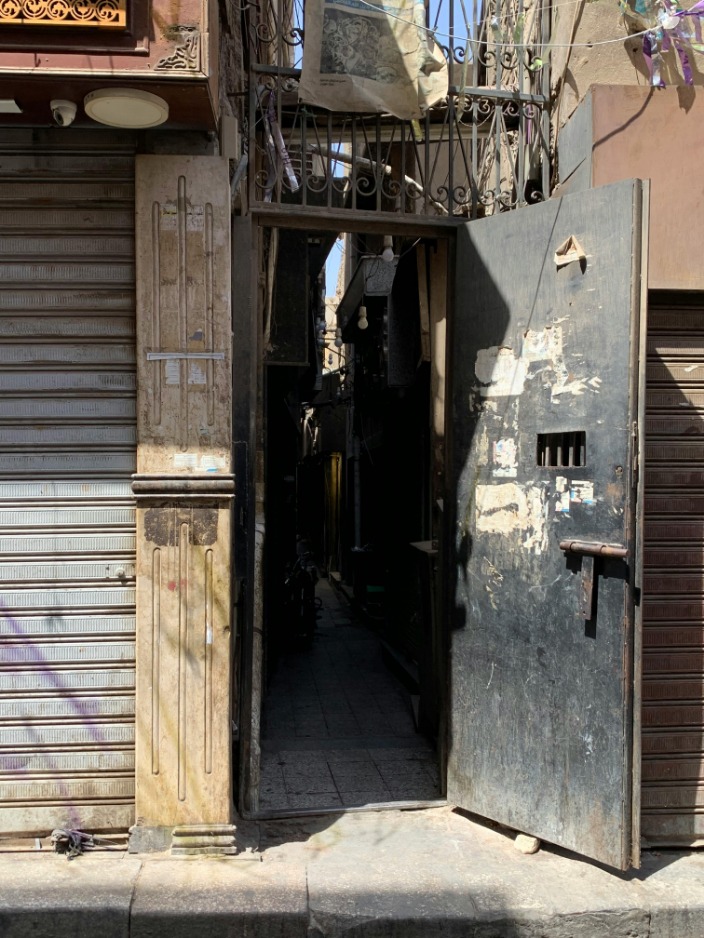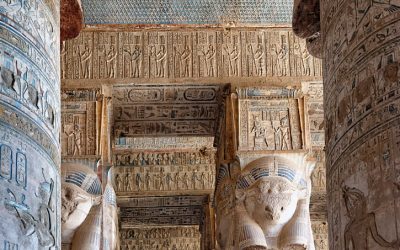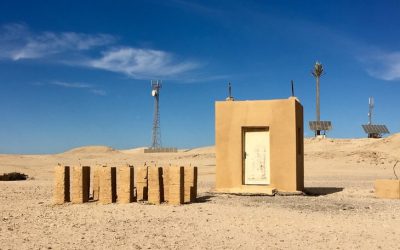Climate Overview of Cairo, Egypt
Cairo, the bustling capital of Egypt, features a desert climate characterized by hot summers and mild winters. Situated along the Nile River, the city experiences high temperatures during the summer months, often exceeding 35°C (95°F). The winter season brings more moderate weather with temperatures averaging around 14°C to 20°C (57°F to 68°F). Precipitation is scarce throughout the year, contributing to the city’s arid environment. Understanding Cairo’s climate is essential for residents and visitors alike to plan their activities and stay prepared for its distinctive weather patterns.
General Climate Characteristics
Cairo, Egypt, experiences a hot desert climate characterized by very hot summers and mild winters. The city receives minimal rainfall throughout the year, primarily during the winter months, resulting in predominantly dry conditions. Summer temperatures often exceed 35°C (95°F) and can reach up to 40°C (104°F) or higher, especially in July and August, while winter temperatures typically range between 8°C (46°F) and 20°C (68°F). The air is generally clear, with abundant sunshine throughout the year, contributing to the city’s high daytime temperatures. Due to its geographic location in the Sahara Desert, Cairo’s climate is marked by low humidity and significant temperature variations between day and night, creating a harsh but sunny environment ideal for outdoor activities during cooler months.
Seasonal Weather Patterns
Cairo, Egypt, has a predominantly desert climate characterized by hot, dry summers and mild winters. The city experiences high temperatures during the summer months, with daytime temperatures often exceeding 35°C (95°F). Winters are generally mild and comfortable, with average temperatures ranging from 10°C to 20°C (50°F to 68°F), making it a popular time for tourism. Rainfall is infrequent and scarce throughout the year, mostly occurring during the winter season.
- Summer (June to August): Hot and dry with daytime temperatures frequently surpassing 35°C. Nights are cooler but still warm, with very little rain. The city faces intense heat waves during this period.
- Autumn (September to November): Temperatures start to drop gradually, making the weather more pleasant. Rain remains rare, but humidity levels can increase slightly toward the end of autumn.
- Winter (December to February): Mild and cooler, with temperatures averaging between 10°C and 20°C. Rainfall is uncommon but occasionally occurs, bringing a refreshing change to the climate.
- Spring (March to May): The weather warms up again, with rising temperatures and lower humidity. It is typically a dry season, although dust storms from the desert can sometimes occur.
Temperature Ranges Throughout the Year
Cairo, Egypt, experiences a desert climate characterized by hot summers and mild winters. The city generally has dry weather with very little rainfall throughout the year, making it a sunny destination nearly year-round. Temperature variations are significant between seasons, with scorching heat dominating the summer months and relatively cooler temperatures in winter.
- Summer (June to August): Temperatures often range from 25°C to 35°C (77°F to 95°F), with heat waves occasionally pushing temperatures above 40°C (104°F).
- Autumn (September to November): Temperatures gradually decrease from about 24°C to 18°C (75°F to 64°F), providing more comfortable conditions.
- Winter (December to February): Temperatures range from 8°C to 19°C (46°F to 66°F), with occasional cold nights dropping near freezing.
- Spring (March to May): Temperatures increase from 12°C to 27°C (54°F to 81°F), leading into the hot summer season.
Summer Weather in Cairo
Summer in Cairo is characterized by intense heat and abundant sunshine, creating ideal conditions for outdoor activities and exploration. The city experiences high temperatures that often soar above 35°C (95°F), accompanied by dry air and minimal rainfall. Despite the scorching weather, Cairo’s vibrant culture and historic sites remain accessible, offering a unique experience during the hot summer months.
Average Temperatures and Heat Waves
Summer weather in Cairo, Egypt, is characterized by hot and dry conditions, with temperatures often reaching high levels. During the summer months, which span from June to September, the average daytime temperatures typically range from 35°C to 40°C (95°F to 104°F). These hot conditions are accompanied by clear skies and minimal rainfall, creating an intense sun and dry atmosphere throughout the city.
Heat waves are a common feature of Cairo’s summer climate, sometimes causing temperatures to soar above 45°C (113°F). These extreme heat spells are usually brief but can significantly impact daily life, leading to health concerns and increased demand for cooling options. Residents and visitors alike are advised to take precautions during these periods, such as staying hydrated, avoiding direct sunlight during the hottest parts of the day, and wearing suitable clothing. Overall, Cairo’s summer weather is emblematic of a typical hot desert climate, contributing to its unique and intense weather experience in Egypt.
Humidity and Its Effects
Summer weather in Cairo is characterized by high temperatures and low to moderate humidity levels, creating a hot and often dry climate throughout the season. The intense heat can reach peaks of 35°C to 40°C (95°F to 104°F), making daytime outdoor activities challenging without proper precautions.
- The humidity in Cairo during summer typically ranges between 20% and 50%, which can influence how the heat is perceived. Lower humidity levels tend to make the heat feel less oppressive, but they can also lead to dry skin and dehydration if individuals do not stay hydrated.
- Increased humidity, however, can amplify the feeling of heat, causing discomfort and fatigue, as sweat does not evaporate quickly from the skin. This can make outdoor activities more exhausting and increase the risk of heat-related illnesses.
- High temperatures combined with humidity can also impact air quality, aggravating respiratory issues and making the atmosphere feel even more oppressive.
- Living conditions may require residents and visitors to use air conditioning or fans, stay indoors during peak heat hours, and drink ample fluids to stay comfortable and safe.
Sunshine Duration and UV Index
Summer weather in Cairo is characterized by hot temperatures and abundant sunshine, typical of a desert climate. During this season, daytime temperatures often reach highs between 30°C and 35°C, with occasional peaks exceeding 40°C. The city experiences long hours of sunshine, with an average sunshine duration of around 10 to 12 hours per day, providing ample sunlight for outdoor activities. The UV Index in Cairo during summer months is usually high, frequently reaching levels of 8 to 11, indicating a significant risk of skin damage from sun exposure. It is advisable to wear protective clothing, apply sunscreen, and stay hydrated while enjoying the sunny weather in the Egyptian capital.
Winter Weather in Cairo
Winter weather in Cairo offers a welcome change from the city’s typically hot climate, bringing cooler temperatures and occasional rain. During this season, residents and travelers experience milder days with pleasant breezes, making it a comfortable time to explore the historic sites and vibrant streets of the Egyptian capital. Understanding the winter weather patterns is essential for planning activities and ensuring comfort in Cairo during the colder months.
Temperature Fluctuations and Cold Spells
Winter weather in Cairo, Egypt, is generally mild compared to northern regions, but it can still bring noticeable temperature fluctuations and cold spells. During the winter months, daytime temperatures typically range from 14°C to 20°C, providing relatively comfortable conditions for residents and visitors. However, nighttime temperatures often drop significantly, sometimes falling below 10°C, which can lead to chilly evenings and mornings.
Temperature fluctuations are common in Cairo during winter, driven by cold air masses from the north and clear skies that allow heat to escape quickly after sunset. These variations can sometimes catch people unprepared, especially if sudden cold spells occur. Cold spells are usually brief but intense periods where temperatures drop sharply, sometimes accompanied by strong winds and reduced humidity, amplifying the cold feeling.
While Cairo’s winter weather rarely reaches extremes, the city occasionally experiences cold spells that highlight the need for warmer clothing and protective measures. Overall, winter in Cairo remains relatively mild, but the fluctuating temperatures and occasional cold spells add variety to the season’s weather patterns, making it an interesting period for residents and tourists alike.
Rainfall and Precipitation Patterns
Cairo experiences a desert climate characterized by hot, dry summers and mild winters. During winter months, the city sees a noticeable increase in rainfall and precipitation. Rainfall in Cairo is generally sparse and infrequent, occurring mainly between November and March. Precipitation patterns tend to be irregular, with some years experiencing more rainfall than others. Winter weather in Cairo can bring cooler temperatures, sometimes dropping below 10°C, along with occasional rain showers that contribute to the overall dryness of the region. Despite these seasonal variations, Cairo remains largely arid, with winter precipitation playing a minimal role in the city’s climate throughout the year.
Wind and Dust Storms
Winter weather in Cairo can bring a mix of cooler temperatures and occasional wind, although the city generally experiences mild conditions during this season. The temperatures typically range from mild to cool, making it more comfortable compared to the hot summer months. However, sudden gusts of wind can sometimes occur, contributing to a chill in the air.
Wind and dust storms are common natural phenomena affecting Cairo, especially during the transitional seasons. These storms often originate from desert areas and can reduce visibility, cause respiratory discomfort, and diminish air quality. Dust storms may occur suddenly, sweeping across the city and impacting daily life, traffic, and outdoor activities. Residents are advised to stay indoors during severe storms and take necessary precautions to protect themselves from dust inhalation.
Spring and Autumn Conditions
Spring and Autumn in Cairo, Egypt, are transitional seasons characterized by mild and comfortable weather. During these periods, temperatures are moderate, providing a pleasant climate for outdoor activities and sightseeing. These seasons offer a respite from the extreme heat of summer and the cold of winter, making them ideal times to experience the city’s rich history and vibrant culture.
Weather Transitions and Variability
Spring and Autumn in Cairo, Egypt, are transitional seasons characterized by gradual changes in weather conditions and notable variability. During spring, temperatures typically begin to rise from the cooler winter lows, creating a warm and often dry atmosphere. This period can experience fluctuations in temperature, with some days feeling comfortably warm while others remain mild, especially in early spring. Autumn, on the other hand, is marked by a cooling trend as the hottest part of the year wanes. The weather becomes more comfortable, with decreasing daytime temperatures and cooler evenings, though the transition can sometimes bring unpredictable weather patterns.
Weather transitions in Cairo during these seasons involve shifts from the cooler, more humid winter months to the hotter summer period, and vice versa. This transition often includes sporadic sand or dust storms influenced by the nearby deserts, adding to the variability. Variability in weather can be observed in the form of sudden changes in wind speed, humidity, and temperature, which can occur over short periods. These fluctuations are typical of transitional seasons and contribute to the dynamic climate experience in Cairo, requiring residents and visitors to adapt to the shifting conditions across these periods.
Humidity and Air Quality
Spring and Autumn in Cairo offer mild and relatively comfortable weather conditions, making these seasons popular among both locals and visitors. During spring, temperatures gradually increase from the cooler winter months, with average daytime temperatures ranging from 20°C to 28°C, while Autumn experiences a gentle decline in temperature after the hot summer, with averages around 22°C to 30°C. Humidity levels during these seasons tend to be moderate, contributing to pleasant outdoor conditions without excessive moisture in the air. However, wind patterns can sometimes bring dust and desert particles, affecting air quality. Overall, the air quality in Cairo during spring and autumn is generally acceptable, but occasional dust storms can temporarily reduce air clarity and impact respiratory health. It is advisable to stay informed about daily weather updates to better prepare for fluctuations in humidity and air quality during these transitional seasons.
Tourist Seasons and Climate Considerations
Spring and Autumn in Cairo offer some of the most pleasant weather conditions, making these seasons ideal for tourism and outdoor activities. During spring, temperatures gradually rise from mild to warm, with average highs around 20-25°C (68-77°F), and the humidity remains comfortable. Autumn experiences a cooling trend with temperatures dropping from the hot summer highs to more moderate levels, typically ranging between 18-24°C (64-75°F). These transitional seasons often feature clear skies and gentle breezes, creating favorable conditions for sightseeing and exploring historical sites.
The peak tourist seasons in Cairo generally coincide with spring and autumn, when the weather is neither overly hot nor cold. During these periods, attractions such as the Pyramids of Giza, Egyptian Museum, and Khan El Khalili bazaar are more accessible and enjoyable. Summer months, from June to August, tend to be extremely hot, with temperatures soaring above 35°C (95°F), which can be uncomfortable for some visitors. Winter from December to February tends to be mild, though it can sometimes be cooler at night, with average temperatures around 10-15°C (50-59°F).
Climate considerations for travel to Cairo include preparing for the dry desert conditions, especially during summer when the heat can be intense and dehydration a concern. Light clothing, ample hydration, sun protection, and comfortable walking shoes are recommended. In spring and autumn, your packing can be more moderate, but it’s wise to have a light jacket for cooler evenings. Overall, timing your visit during spring or autumn allows travelers to enjoy Egypt’s rich history and vibrant culture with more comfortable weather conditions.
Impact of Weather on Daily Life in Cairo
The weather in Cairo significantly influences daily life, shaping routines, activities, and daily decisions for its residents. As a city characterized by a desert climate, Cairo experiences hot summers and mild winters, which affect everything from transportation to health. Understanding the impact of weather patterns is essential for residents and visitors alike to navigate the city efficiently and stay comfortable throughout the year.
Air Quality and Pollution Levels
The weather in Cairo significantly influences daily life, particularly when considering air quality and pollution levels. Hot and dry conditions common in summer often lead to increased dust and particulate matter in the air, which can cause respiratory issues and discomfort for residents. Seasonal variations, such as fog or thermal inversions, can trap pollutants close to the ground, exacerbating pollution problems during certain times of the year. Additionally, weather fluctuations impact outdoor activities, transportation, and health advisories, making it essential for residents to stay informed about daily air quality indices. Overall, the climate in Cairo plays a crucial role in shaping the city’s environmental health and the well-being of its inhabitants.
Effects on Transportation and Infrastructure
The weather conditions in Cairo significantly influence daily life, particularly affecting transportation and infrastructure. During the hot summer months, extreme heat can lead to road surface damage, such as asphalt melting and cracking, which hampers road safety and increases maintenance costs. Additionally, high temperatures can cause health issues like heatstroke, impacting daily routines and productivity. In contrast, the winter season brings cooler temperatures and occasional rainfall, which can lead to flooding in low-lying areas, disrupting traffic flow and damaging roads and bridges. Dust storms, common in Egypt’s arid climate, also temporarily limit visibility on roads, increasing the risk of accidents and delaying public transportation. Overall, the fluctuating weather patterns in Cairo require consistent adaptation in transportation systems and infrastructure to ensure safety and efficiency for residents and visitors alike.
Health Considerations Related to Climate
The weather in Cairo significantly influences daily life and health considerations for its residents. With its predominantly hot and dry climate, especially during summer months, residents often experience discomfort due to high temperatures, which can lead to heat exhaustion or dehydration if proper precautions are not taken. The intense sun exposure also increases the risk of sunburn and skin-related issues. During winter, the weather tends to be milder, but occasional dust storms and cooler temperatures can affect respiratory health, especially for those with pre-existing conditions. The arid climate contributes to a high level of dust and pollution, which may worsen asthma and other respiratory problems. Therefore, understanding and adapting to Cairo’s weather patterns is essential for maintaining good health and ensuring daily activities are carried out safely and comfortably.
Historical Climate Data and Trends
Historical climate data provides valuable insights into the long-term weather patterns and trends that have shaped Cairo’s environment over the years. Understanding these trends helps in assessing the impact of climate change and aids in planning for future weather-related challenges. Cairo, Egypt’s bustling capital, has experienced significant variations in temperature, precipitation, and humidity, reflecting broader regional climate shifts and contributing to the city’s unique climate profile.
Climate Change Effects in Cairo
Cairo, Egypt, has experienced notable shifts in its climate patterns over the decades, reflecting broader global climate change trends. Historical climate data reveals increasing temperatures and changing precipitation patterns that impact the city’s environment and daily life. Understanding these trends is essential to addressing the ongoing effects of climate change in Cairo.
- Average temperatures in Cairo have risen by approximately 1.2°C over the past century, with recent decades recording some of the hottest years on record.
- Precipitation levels have generally decreased, leading to more prolonged drought periods and water scarcity issues.
- Heatwaves have become more frequent and intense, often exceeding 40°C during summer months.
- Urban heat island effects exacerbate temperature increases in Cairo’s densely populated areas.
- Changing climate patterns threaten traditional agriculture and water resources, impacting the local economy.
- The rise in temperatures accelerates the melting of nearby desert sands, increasing dust storms and air pollution.
- Extended periods of drought have led to reduced water availability from the Nile River, affecting agriculture and daily life.
- More intense heatwaves pose health risks for vulnerable populations, including heat exhaustion and heatstroke.
- Urban infrastructure faces increased stress due to higher cooling demands and extreme weather events.
- Environmental challenges in Cairo highlight the urgent need for climate resilience and sustainable urban planning strategies.
Long-term Temperature and Rainfall Trends
Cairo, Egypt, has experienced notable changes in climate patterns over the past century, particularly regarding temperature and rainfall trends. Historical climate data reveal that the city has generally seen an increase in average temperatures, reflecting a broader regional warming trend. This rise in temperature has contributed to hotter summers and milder winters, affecting daily life, agriculture, and water resources in the area.
Long-term records indicate that rainfall in Cairo remains sporadic but shows a decreasing trend over the decades. The city receives minimal annual rainfall, and the declining precipitation has intensified issues related to water scarcity and desertification. These climate changes are consistent with global warming patterns and contribute to the broader climate challenges faced by Egypt and the Middle East region.
Overall, the long-term climate data underscores a trend toward warmer and drier conditions in Cairo, emphasizing the importance of adaptive strategies to mitigate the impacts of climate change on urban environments, water security, and local ecosystems in Egypt.
Future Climate Predictions
Cairo’s weather climate has experienced notable changes over the past century, with historical data indicating a trend toward higher temperatures and more frequent heatwaves. These patterns are consistent with global climate change impacts, affecting the region’s overall weather stability. Historically, Cairo has had hot summers with temperatures often exceeding 35°C, alongside mild winters and minimal rainfall. Analyzing long-term climate records reveals a gradual increase in average temperatures, particularly during summer months, suggesting a warming trend over decades.
Future climate predictions for Cairo project continued warming, with models indicating that average temperatures may rise further due to ongoing greenhouse gas emissions. This could lead to more intense heatwaves, increased drought frequency, and reduced rainfall, which may adversely affect agriculture, urban planning, and water resources. Climate projections emphasize the importance of implementing adaptive measures to mitigate these impacts and ensure sustainable living conditions in Cairo amidst changing climate patterns.





0 Comments